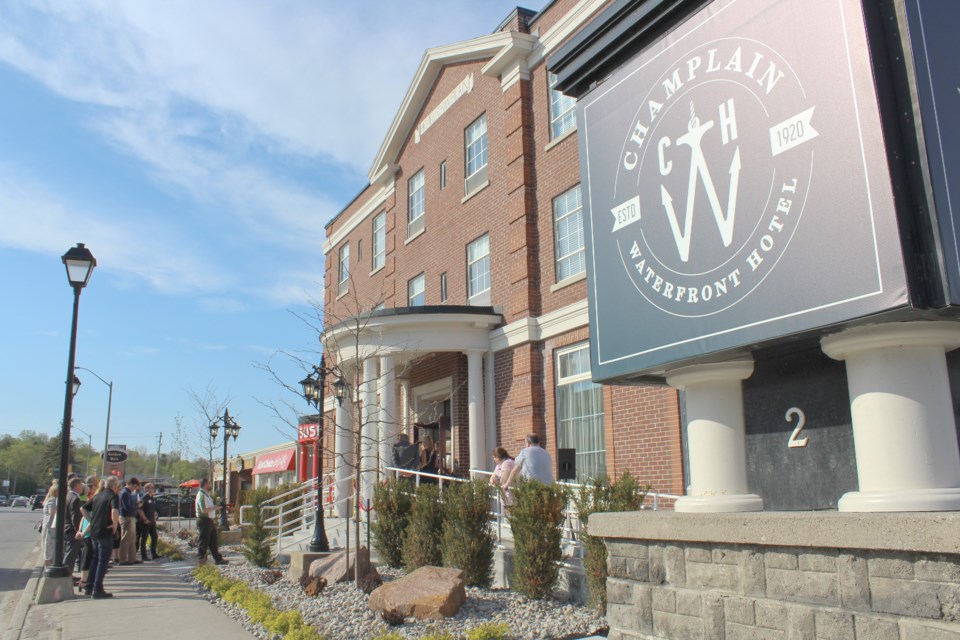Every time someone checks into a hotel room in Orillia after April 6 of 2020, they will be making an investment in the city’s tourism efforts.
In August, city council voted to approve a municipal accommodation tax (MAT) that will add 4% to every night’s stay in a hotel, bed and breakfast or air bnb.
As part of that decision, council voted to designate Ontario’s Lake Country (OLC) as the city’s tourism entity. As such, the local destination marketing organization will receive half of the estimated $436,000 that will be collected annually.
In addition, OLC will co-ordinate the collection and remission of the new tax and will receive 2.5% of the gross revenue, or about $11,000, for that responsibility.
That begged the question: What should the city do with its share.
City staff presented council committee a few options.
Option 1 involved investing 60% of the expected $210,000 to enhance tourism, while putting the remaining 40% into a tourism reserve fund.
Option 2 involved investing 35% of the expected $210,000 to enhance tourism, while putting 15% into a tourism reserve fund and using the remaining 50% to offset the municipal tax levy.
Option 3 suggested using 100% of the proceeds to lower taxes.
Staff, in a detailed report, championed Option 1. And city councillors heartily agreed.
“I don’t know how we could do anything else,” said Coun. Tim Lauer. “It’s incumbent on us to invest the entire amount back into the industry.”
That is exactly what the industry wanted, reported Michael Ladouceur, the city’s manager of tourism.
He said staff consulted with the hotel industry regarding the implementation of a MAT.
“The industry felt a proposed MAT would yield a positive impact on tourism in Orillia and wanted to see all MAT dollars allocated to enhance tourism initiatives in Orillia,” said the report.
The hotel industry ranked the following four items as priorities:
- Tourism marketing initiatives;
- Event support;
- Tourism development; and
- Capital infrastructure improvements
Ladouceur said Option 1 “provides the greatest positive impact to tourism in Orillia, while supporting the hotel industry’s request to enhance tourism.”
Enhancing the tourism operating budget “would increase marketing initiatives, waterfront activation, and new product development with Orillia tourism operators, attracting and supporting festivals and events, and provide enhanced visitor information,” noted the report.
Staff provided some examples of potential initiatives:
- Marketing and advertising campaigns through television, radio, print and digital to the Greater Toronto Area (GTA) and other targeted locations and demographics;
- Year-round waterfront activations;
- Waterfront beautification initiatives;
- Development of Orillia branded merchandise/information to be given to hotels/marinas to welcome tourists and promote Orillia offerings;
- Interactive appearances and displays at large events such as the Ontario Winter Games and the Mariposa Folk Festival;
- Video and photography production to capture event and attraction footage for future marketing use;
- Casual staffing to support tourism development and visitor information services initiatives;
- Enhancing visitor information services to include the shoulder seasons; and
- Support for unique, one-time events or opportunities such as the NBA Jurassic Park live-streaming event, conference attraction, and sport tourism.
This support would be separate from the grants committee. Examples of past events that would qualify for MAT support and how they were previously funded:
- Orillia 2018 Ontario Winter Games ($20,000 - Capital Tax Levy)
- Orillia 2020 Ontario Winter Games ($20,000 – Capital Tax Levy)
- 2017 Rogers Hometown Hockey ($30,000 – Operating Contingency)
- Toronto 2015 Pan Am Torch Relay ($10,000 – Operating Contingency)
- 2010 Vancouver Olympic Relay ($7,000 – Operating Contingency)
A tourism reserve fund will also be created and 40 per cent of projected annual MAT revenue (estimated at $85,000) will be directed to this fund to “support large-scale initiatives or capital projects associated with tourism.”
Examples of projects that could qualify for tourism reserve fund dollars include:
- Professional fees associated with capital infrastructure developments;
- Sport tourism investment;
- Visitor information mobile trailer;
- Paving of trails; and
- Festival and event infrastructure, such as tents, staging, speakers
“Tourism is an important economic driver for Orillia, with accommodation and food services identified as one of Orillia’s top five growing industries,” noted the staff report.
“The MAT will facilitate our objective to further establish Orillia’s reputation as a place to live, work and play,” concluded the report.
Decisions made at council committee are subject to ratification at Monday’s city council meeting.
